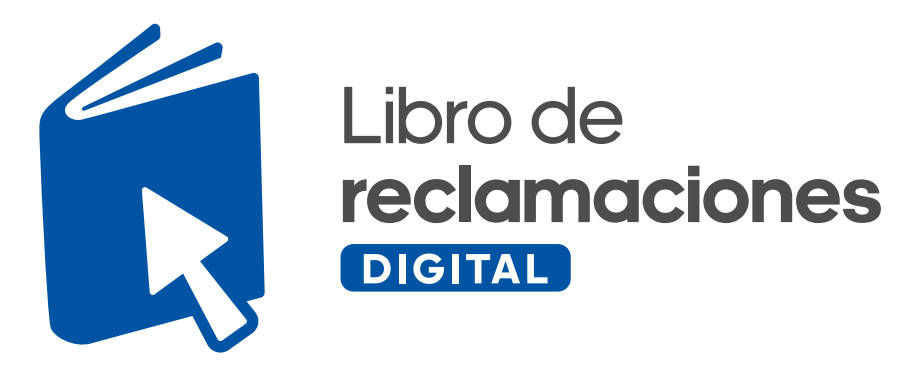1. Introduction: Understanding Marine Ecosystems and Human Dependence
a. Overview of marine biodiversity and its importance
Marine ecosystems are among the most diverse environments on Earth, hosting millions of species ranging from microscopic plankton to the largest mammals like whales. These ecosystems provide vital services, including oxygen production, climate regulation, and supporting global food chains. For example, coral reefs, often called the «rainforests of the sea,» support approximately 25% of all marine species despite covering less than 1% of the ocean floor.
b. The significance of fishing industries globally, with a focus on Norway’s seafood exports
Fishing is a cornerstone of many economies, supplying food and employment worldwide. Norway exemplifies this, being one of the world’s leading seafood exporters, particularly renowned for its salmon and cod. The country’s fishing industry contributes significantly to its GDP and sustains coastal communities, emphasizing the importance of maintaining healthy marine populations.
c. The concept of sustainable fishing and modern innovations like Fishin’ Frenzy
Sustainable fishing aims to balance human needs with the preservation of marine ecosystems. Innovations such as eco-friendly gear, quota systems, and modern simulation tools—like the popular game where fisherman collects fish values during bonus—help promote responsible practices. Such tools educate and inspire new generations to value conservation alongside industry growth.
2. The Problem of Plastic Waste in Marine Environments
a. Types and sources of plastic pollution in oceans
Plastic pollution in oceans originates from various sources, including land-based waste, maritime activities, and fishing operations. Common types include microplastics—tiny particles less than 5mm—and larger debris like plastic bags, bottles, and fishing gear. Urban runoff, inadequate waste management, and illegal dumping significantly contribute to this issue.
b. Pathways of plastic waste reaching marine habitats
Plastic waste travels through rivers, stormwater systems, and atmospheric deposition before reaching coastal areas and open oceans. Currents and wind patterns facilitate the spread, forming massive accumulations like the Great Pacific Garbage Patch, which spans an area estimated at twice the size of Texas.
c. The scale of plastic pollution: global statistics and trends
Recent studies estimate that over 8 million metric tons of plastic enter the oceans annually. Microplastics have been detected in deep-sea sediments and even in the Arctic ice, highlighting the pervasive nature of this pollution. The trend suggests an increasing accumulation unless effective mitigation measures are implemented.
3. Effects of Plastic Waste on Marine Life
a. Physical impacts: ingestion, entanglement, and injury
Marine animals often mistake plastic debris for food, leading to ingestion that can cause internal injuries, blockages, or starvation. Entanglement in discarded fishing gear or plastic rings can result in drowning, impaired mobility, or fatal injuries. Such physical impacts are documented across species, including sea turtles, seals, and seabirds.
b. Chemical impacts: toxins and bioaccumulation
Plastics contain or adsorb toxic chemicals like PCBs and DDT, which enter marine organisms through ingestion. These toxins bioaccumulate up the food chain, affecting predators—including humans—who consume contaminated seafood. Studies have shown elevated toxin levels in fish and marine mammals near polluted areas.
c. Disruption of reproductive and developmental processes in marine species
Chemical contaminants from plastics can interfere with hormone systems, leading to reproductive issues and developmental abnormalities. For instance, exposure to plastic-associated chemicals has been linked to decreased fertility in fish and altered growth rates in invertebrates, threatening population stability.
d. Non-obvious effects: alteration of habitats and food webs
Accumulated plastics can smother coral reefs and seagrass beds, disrupting habitats crucial for juvenile fish and invertebrates. Additionally, the ingestion of plastics can lead to changes in prey availability, causing cascading effects throughout the food web.
4. Case Studies: Plastic Waste and Marine Species
a. Marine mammals and seabirds
Sea turtles, such as the endangered leatherback, often ingest plastic bags mistaken for jellyfish. Seabirds like albatrosses feed plastic debris to their chicks, leading to high mortality rates. In 2019, a study estimated that over 90% of sea turtle species have ingested plastic at some point in their lives.
b. Fish populations and coral reefs
Microplastics have been detected in commercially important fish species, affecting both their health and the safety of seafood. Coral reefs, vital biodiversity hotspots, are increasingly covered with plastic debris, which hampers their growth and resilience.
c. Examples of species affected and ecological consequences
| Species | Impact | Ecological Consequences |
|---|---|---|
| Green sea turtles | Ingest plastic bags | Reduced survival rates, reproductive failure |
| Laysan Albatross | Feed plastics to chicks | High chick mortality, altered food web dynamics |
| Coral reefs | Covered by plastic debris | Decreased coral growth, habitat loss |
5. Economic Impacts on the Fishing Industry
a. How plastic pollution affects fish stocks and catch quality
Plastic debris can damage fishing gear, leading to increased costs and reduced efficiency. Contaminated fish may also be unsafe for consumption, impacting market quality and consumer confidence. Studies show that microplastics in fish can reduce their market value and pose health risks.
b. The financial burden of pollution cleanup and fishery management
Cleaning up plastic pollution requires substantial investment, often funded by government or industry. Additionally, managing declining fish stocks due to habitat degradation and contamination increases operational costs for fisheries. For countries like Norway, where fishing is a national economic pillar, these costs threaten both livelihoods and sustainability.
c. Implications for countries heavily dependent on fishing, such as Norway
Norway’s fishing industry faces challenges from plastic pollution, including gear damage, declining fish populations, and export restrictions due to contamination concerns. Adapting to these threats necessitates innovation and stricter environmental policies, reinforcing the importance of sustainable practices.
6. Innovations in Fishing Technology and Practices
a. Traditional vs. modern fishing methods
Traditional methods, such as gillnets and trawling, often result in bycatch and habitat disturbance. Modern techniques focus on selectivity and reduced environmental impact, including the use of sonar and GPS-guided gear, which improve efficiency and sustainability.
b. Introduction of eco-friendly and sustainable fishing innovations
Emerging innovations include biodegradable gear, artificial reefs, and digital monitoring systems. These advancements aim to minimize plastic debris, reduce habitat damage, and promote responsible harvesting, aligning industry practices with conservation goals.
c. Case study: Fishin’ Frenzy as a modern fishing simulation promoting sustainable practices
Games like where fisherman collects fish values during bonus exemplify how digital platforms can educate users about sustainable fishing principles. By simulating responsible catch limits and eco-conscious decisions, such tools foster awareness and reinforce the importance of sustainability in real-world fishing practices.
7. New Frontiers: Reducing Plastic Waste and Enhancing Marine Conservation
a. Strategies for preventing plastic pollution at the source
Preventive measures include improving waste management infrastructure, banning single-use plastics, and promoting recycling. Extended producer responsibility (EPR) policies incentivize manufacturers to design sustainable products, reducing plastic leakage into oceans.
b. Marine protected areas and cleanup initiatives
Designating marine protected areas (MPAs) limits human activities that harm ecosystems. Cleanup campaigns, such as beach cleanups and ocean skimming devices, actively remove floating plastics, restoring habitat health and biodiversity.
c. Role of technology and community engagement in conservation efforts
Innovations like underwater drones and AI-powered monitoring enhance detection of pollution hotspots. Community-led initiatives foster local stewardship, raising awareness and promoting responsible behavior among fishermen, tourists, and residents.
8. The Future of Marine Ecosystems and Fishing Innovation
a. Potential impacts of continued plastic pollution
If current trends persist, marine biodiversity will decline, fish stocks will diminish, and ecosystems could reach tipping points, leading to collapse. Economic losses for fishing communities and increased food insecurity are likely consequences.
b. Opportunities for technological advancements to mitigate effects
Advancements such as biodegradable plastics, real-time monitoring sensors, and AI-driven predictive models can help prevent pollution and adapt fishing practices. For instance, smart gear can reduce bycatch and gear loss, decreasing plastic debris in oceans.
c. Policy recommendations and global cooperation
International agreements like the MARPOL Convention and regional initiatives are essential for coordinated action. Policies promoting circular economy principles, stricter regulations on maritime waste disposal, and funding for conservation programs are critical for sustainable futures.
9. Conclusion: Integrating Education, Innovation, and Policy for Healthy Oceans
a. Summarizing the interconnectedness of plastic waste, marine life, and fishing
Plastic pollution directly harms marine species, disrupts ecosystems, and jeopardizes fishing industries. Addressing this complex web requires a holistic approach combining scientific understanding and practical solutions.
b. The importance of public awareness and responsible behavior
Educating communities about the impacts of plastic waste and encouraging responsible consumption are vital steps. Tools like where fisherman collects fish values during bonus serve as educational platforms that inspire responsible fishing practices.
c. Final thoughts on sustainable futures with examples like Fishin’ Frenzy to inspire change
Innovative approaches, technological advancements, and global cooperation are essential to safeguard our oceans. By integrating education, policy, and industry initiatives, we can work toward sustainable fishing practices that protect marine life for future generations.


